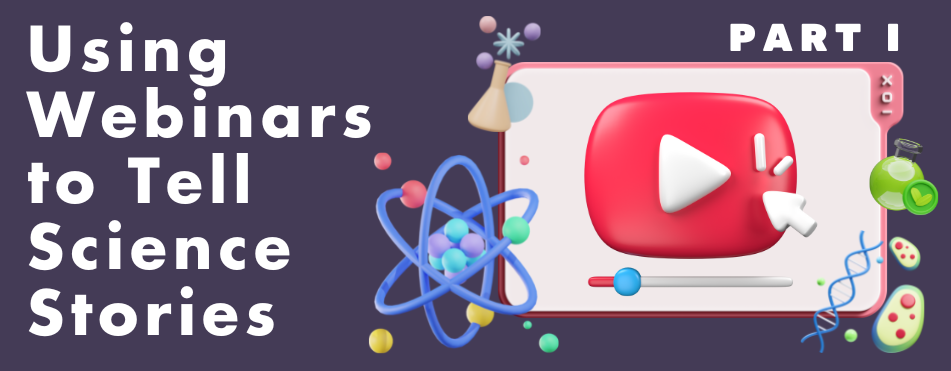 By Rebecca TurpinFeb 8 2023Reviewed by Danny Layzell
By Rebecca TurpinFeb 8 2023Reviewed by Danny Layzell
Webinars continue to go from strength to strength within scientific communications. They provide marketers with a platform to tell their science stories to a global audience in a format that they are becoming increasingly familiar with. In this interview I sat down with AZoNetwork Virtual Events Manager, Danny Layzell, to discuss how marketers can utilize webinars to reach and engage their audience and what it takes to produce an effective webinar campaign.
What are the benefits of using webinars in your scientific marketing?
Webinars are a phenomenal platform for creating an experience that showcases your company and your scientific expertise at the forefront of your industries.
They’re a platform where you can get in front of a global audience in a cost-effective way, educate your target audience about your latest research, and showcase the problems your product solves.
One of the many benefits of webinars is that they can be implemented at different stages of the buying journey. They can be implemented at the top of the funnel/brand awareness stage by producing a thought leadership webinar, middle-of-funnel events that include an external key opinion leader who has used your product, and bottom-of-the-funnel webinars where you invite a smaller audience of buying execs and showcase your product in action and essentially run a live interactive demo.
Using this format for a 3-part webinar series is also a tried and tested strategy for moving prospects through the funnel.
Are webinars a good tool for driving leads?
Webinars can generate a lot of leads. But of course, not all leads are created equal.
This is why the market intelligence that you get from running webinars is so important. We recommend that our clients segment their webinar audience based on the intent and interest that they have shown during the campaign. You can do this by strategically getting data points on your audience during the registration process, polls in the event and end-of-webinar surveys. If you ask the right questions, then these data points will help you to understand better your audience's needs and what is the best ‘next step’ or ‘action’ to take with each individual lead.
Someone who is there to learn would probably benefit from additional content, whereas someone who has stated they are actively in the buying process will want a 1:1 demo/follow-up call as soon as possible.
Analysing & Actioning Webinar Data
The main difference between the leads you generate on a webinar campaign and on other marketing campaigns is that a webinar is a two-way interactive experience when you learn more about your audience and get a more complete picture of their needs and how your products can help them.
The average registration rate for our 2022 webinars was 291
What about using webinars as a demand-generation tool?
Webinars are a great way of generating demand. They allow you to establish your company as the authority within your industry and put your scientists and products in front of the right people. Because there are no geographical boundaries, you can also showcase your brand at scale allowing you to reach audiences that your budgets might not usually allow you to.
They also enable you to answer customer questions or objections in real-time and provide you with seamless ways to capture demand through the various CTAs and polls that you can run within the webinar platform.
The thought of managing a webinar campaign can be daunting, how do you make this process easy for clients?
When we plan a webinar with a client, we break it down into four stages; planning, production, promotion, and reporting.
During the planning phase, we establish KPIs, understand more about the type of audience they want to target, and the content they want to deliver, and then draw up a timeline of delivery.
When it comes to production, the speaker(s) can often be external to the client, so we want to make the process of delivering their content as easy as possible. This typically includes running technical checks, giving a run-through of our webinar platform, and pre-recording the presentation aspect of the webinar.
The speaker(s) and the content are critical to a successful webinar so we ensure they have everything they need to feel comfortable and deliver their best performance to the audience.
Whilst the production is going on, we are also running the promotion. This includes email, newsletters, and social media promotion to a segment of our 900,000+ audience that has been broken down by keywords, industries, applications, etc.
To get a complete picture of your webinar campaign, it's important to integrate webinar data from all sources - registration forms, email campaigns, and the webinar platform - together. Our new AZoIntel webinar reporting enables you to do this so you can analyze your webinar performance and determine what actions need to be taken next.
Webinar Reporting Demo with AZoIntel
What's new for webinars in 2023?
Our benchmarks stats from 2022 continue to show the importance of on-demand promotion. Typically marketers will send a link to the recording after the event and then move on to the next campaign.
What we are really trying to emphasize is that continuing to promote your webinar after the live date has passed to both the people who registered but haven't viewed it and to new audiences is an excellent way of extending the reach of your webinar and generating new leads throughout the 12-month cycle of your webinar.
We are also seeing some interest in various new formats, particularly the pre-recorded ‘live podcast style’ where you have a group of KOLs discuss a particular topic, and answer live audience questions in the chat or Q&A section whilst the recording of the discussion is showing.
We are running an example of this at our 'Science on Display' Webinar on 15 March 2023 - sign up here.
Do you want to learn more about webinars?
You can learn more about our webinar services here or read part 2 of the interview with Danny here.